 ABSTRACT EXPRESSIONISM
ABSTRACT EXPRESSIONISM
Sense and Meaning
Stephen Polcari is an art historian. Formerly director of the Smithsonian Institution’s Archives of American Art in New York, Polcari is the author of the seminal Abstract Expressionism and the Modern Experience (Cambridge University Press, 1991). He is also author of Richard Pousette-Dart: The Portal (Abrams, 1997) as well as numerous articles in magazines such as Art International, Arts Magazine, the Burlington Magazine, Art Journal, Art News and the Smithsonian Studies in American Art . Mr. Polcari teaches classes on American and European modern and contemporary art while specializing in art of the mid twentieth century. He has curated exhibitions and written catalogues on these subjects for the Metropolitan Museum of Art, the Jewish Museum and other institutions. He is presently preparing a manuscript on the art of Jackson Pollock and curating an exhibition, “Jackson Pollock and Shamanism,” for the Pinacotheque in Paris. Polcari’s teaching philosophy emphasizes the interaction of artistic form, cultural idea, and historical experience.
With the collapse of American academic presses, writing on art requires new means. The site Abstract Expressionism; Sense and Meaning is one. Here will be published a lifetime of research and study of the Abstract Expressionist art and artists including Jackson Pollock, Clyfford Still, Adolph Gottlieb, Richard Pousette-Dart, Mark Rothko, Barnett Newman and more.
The site will comprise essays, talks, museum and gallery catalogues. Key studies such as the English language version of acclaimed exhibitions “ Pollock and Shamanism ” of the Pinacotheque de Paris, “From Omaha to Abstract Expressionism/American Respond to World War II, ” and “ Clyfford Still Ritual Artist” will be included here.
And Jackson Pollock Agonist, a book almost thirty years in the making will be published. Published or rather republished, too, will be the revolutionary book Abstract Expressionism and the Modern Tradition which became the standard study of Abstract Expressionism in 1991, replacing Irving Sandler’s The Triumph of American Painting . It is now out of print. All writings will share the distinction of seeking the sense and meaning of the art&s symbolization, imagery and forms in the context of Western history and culture. Knowledge and understanding will be expanded beyond the first grasping of the 1950s such as “gesture,” “spontaneity,” and “automatism”.
If you are interested in the serious examination of Abstract Expressionism, free of ideological and methodological agendas, this site is the starting point.
Welcome.

Quick links to Published Work
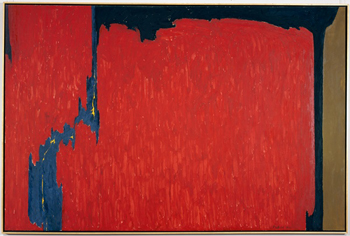
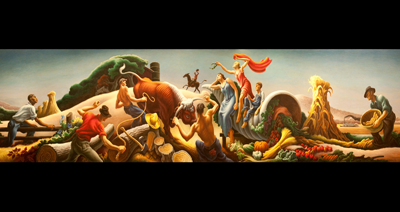
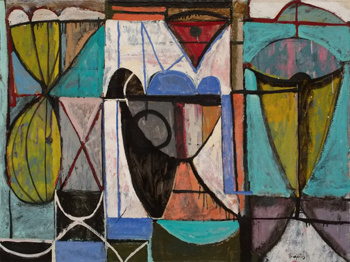
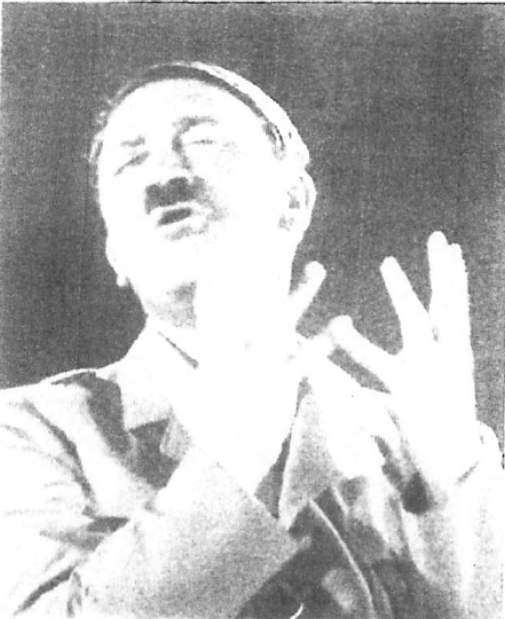
Modernist History, Surrealist Imagination, American Art
The ascendency of Modern Art in America in the 1940s
|
|


Read Stephen Polcaris "Paris Essay" on Jackson Pollock.
Jackson Pollocks entire development partakes of the assumptions, culture, and values of his His is an art devoted to inwardness in the form of psychologized, ritual transformation of himself and his world. His is an art created in response to the epic conflicts and destruction of both in the 1930s and 1940s and to the socio-cultural personality that was thought to have generated them: the wasteland of mass society and mass, if not fascist, man thought to be evident to the world at Nuremberg. ...
With the 2011 opening of the Clyfford Still Museum (CSM) in Denver, in which most of the oeuvre of his lifetime will be housed, new evidence has appeared that furthers the idea of Clyfford Still as an artist of power and the forms that power takes— the primitivizing, shamanic artist.
Adolph Gottlieb and the Sculpture of the Abstract Expressionist Painters
Adolph Gottlieb’s art has only recently emerged from the control of the ideas of the fifties generation of artists and critics in America, that is, mostly the followers of the figure painter Willem de Kooning.
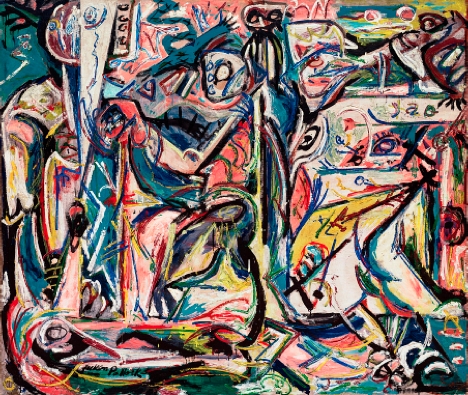
Jackson Pollock Mass Man Agonist
In many ways, we would not need another book on Jackson Pollock. After all, the outlines of his work are well known and what could be added? What could be added is a new depth and analysis that both reinforces and transforms understanding of his work. They would redo the consensus that Pollock’s work is a form of generalizations about the personal unconscious. To do this we need to do something revolutionary: actually examine the imagery and subjects of his work. No doubt the literature believes this has been done but the result has been an unrecognized superficial examination of Pollock’s work. Rather than subjective fantasies, Pollock’s art consists of quite legible imagery that defines his ideas and articulates subjects.
I am oversimplifying. New approaches in the last twenty years have proposed specifics according to a preconceived ideology – Jungianism or modern man philosophizing. Yet those new interpretations keep Pollock as a mostly a personal, individualistic, psychological painter but is he? This book proposes that we look at Pollock as not painting from the unconscious but painting specific ideas and form that represent the idea of the cultural Self . And those ideas and forms are from his cultural world.
Pollock is a primitivizing painter whose “primitivism” is used to rationalize the work as coming from the unconscious. In other words, Pollock does traceable forms and images that can be located clearly within Indianart, ritual and shamanism. The images are specific so that we can understand anew his famous works. I mention here just two forms mostly “unseen” in his work: the baby in She Wolf of 1943 which has seldom been discussed and the shamanist subjects of fire, solarization, incorporation, the magic breath of life, spirit helpers and so many others.
This book visually analyzes Pollock to a depth never achieved before because the ideology of coming from unconscious has blocked people from the looking necessary to notice the repeated forms, subjects and ideas. As in my path-breaking first book, Abstract Expressionism and the Modern Experience (Cambridge University Press, 1991), Pollock will be examined in greater visual, cultural and historical depth than ever before. Indeed, it is the thesis of this book that rather than mere personal subjectivity, Pollock’s art takes on the issues of the day, particularly those between wars from which his art arose.
These issues derive from a great theme of the day before World War II: the struggle to refound modern personality on a basis opposite of the prevailing form – mass man. To do this, for the first time this study of Pollock will examine interwar issues of reformulating a new personality/psyche that will meet the challenge of modernity. Mass man was marching at Nuremberg. Pollock proposed a counter measure, a man of depth, feeling, naturalism, and greater spiritual capacity. The American thirties will thus be analyzed as a cultural expression out of which issues that dominate Pollock come. The connection of many intellectual figures such as Carl Jung, Arnold Toynbee, T. S. Eliot, Clement Greenberg, Irving Howe and many others to the problems of mass man and mass personality in the 1930s will be found. Ultimately, they result in the reformulation of new man based on Native American and shaman ritual sources.
Jackson Pollock : Mass Man Agonist will study and reveal not the drunk of yore and not merely the postwar subjective individual artist but one in which psychology will become the means for Pollock to address and transform culture and society before, during and after the war. Pollock is a painter of public topics and he led the way to the use of psychology/ritual to alter the public discourse. In this he was a pioneer of cultural change in America where psychological man replaced religious man as the dominant figure to this day. In this book, Pollock emerges at the center of the new Self in America.
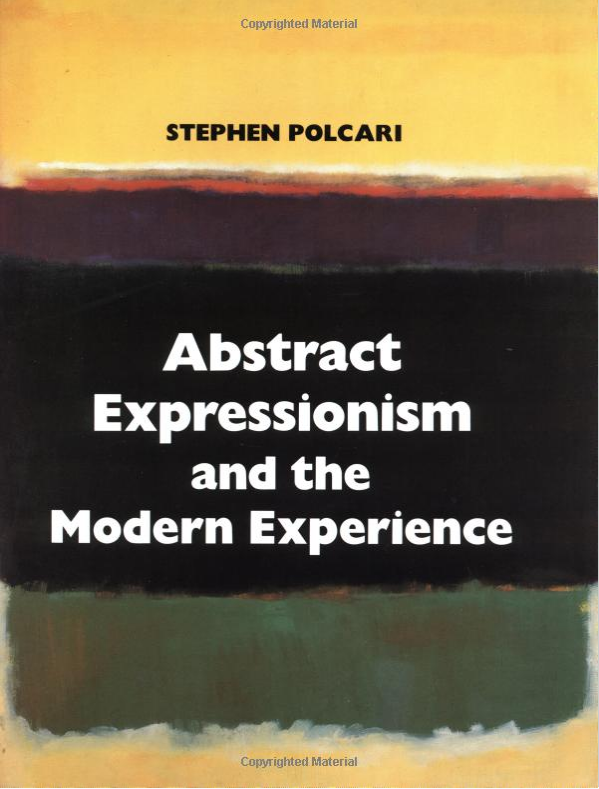
Abstract Expressionism and the Modern Experience
A major revisionist study of the art and artists who participated in what is now regarded as the first American style of international consequence. Based on examinations of new archival material and many unknown paintings, this study relates Abstract Expressionism to the actual historical circumstances, as well as intellectual and cultural milieu, of America from the 1930s to the 1950s. Stephen Polcari reverses the traditional perspective of Abstract Expressionism as an abstract art inspired by issues of the postwar period. Examining its roots in the art of the 1930s and 1940s, he contends that Abstract Expressionism emerges as a public art that actively engaged in the social, economic, and political crises of the 1930s, and, more significantly, the experience of World War II. Polcari provides an account of the contemporary artistic, intellectual and cultural history to establish a macro-history of human beings under the pressures of war, fear, torment, and hope. Within this context, he convincingly presents Abstract Expressionism as a mode of modern, metaphysical 'history' painting that uses the forms and devices of modern art to come to terms with the brutality of contemporary history.
